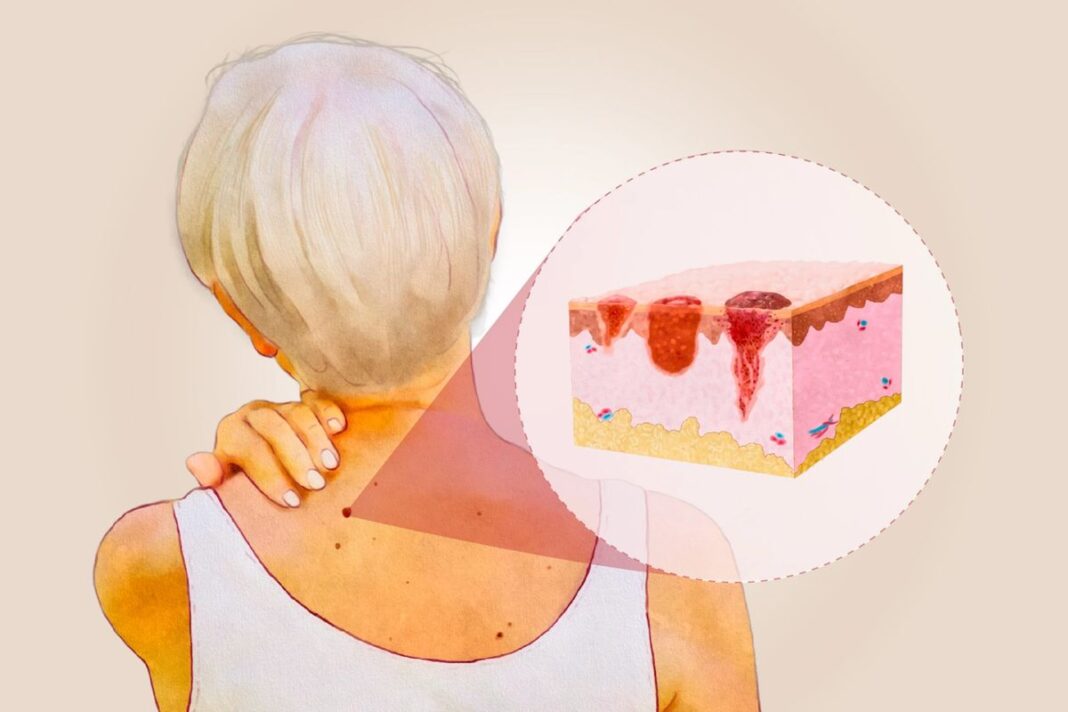Millions of Americans are diagnosed with skin cancer every year, but most cases are highly treatable when found early.
Skin cancer is the most common type of cancer in the United States, and its incidence has been increasing.
It includes basal cell carcinoma (BCC)—the most common and generally less dangerous type, which often is not reported to cancer registries—and also the deadly type called melanoma.
Most skin cancers are nonmelanoma. Melanoma, though it accounts for about 1 percent of skin cancers, is the fifth most common cancer overall in the United States.
There are some warning signs that can help you identify them early.
What Are the Types and Symptoms of Skin Cancer?
There are three main types of skin cancer, each with distinct characteristics and warning signs.
While skin cancer often shows no symptoms in its early stages, a key warning sign for any type is a new or changing skin spot that persists for two weeks or longer.
General Symptoms Across All Types
Common symptoms that may indicate any type of skin cancer include:
- New mole or bump
- Change in an existing mole’s size, shape, or color, or bleeding
- Flat or raised patch that is pink, red, or brown
- Sore that does not heal and may bleed or crust
- Itchy, bleeding, or painful area
- Shiny or skin-colored bump
- Rough, scaly red spot
- Growth with irregular or elevated borders
- Growth with an unusual color such as white, black, blue, pink, or red
See a dermatologist immediately if you notice:
- New mole or growth
- Change in an existing mole’s size, shape, color, or texture
- Sore that does not heal within four weeks
- Spot that bleeds, itches, or is painful
- Skin change that concerns you
1. Basal Cell Carcinoma
BCC is the most common form of skin cancer, accounting for approximately 80 percent of all skin cancer cases in the United States. BCC originates in the basal cells—located in the lower part of the epidermis—that continuously divide to replace aging squamous cells on the skin’s surface.
Where it appears: BCCs most often develop on sun-exposed areas such as the face, ears, scalp, neck, shoulders, and arms, but they can also appear on the chest, back, abdomen, and legs.
What to look for:
- Persistent, nonhealing sore or ulcer: A sore that appears shiny, translucent, pink, pearly white, or red. It may be tender, rough, have raised edges, and show bleeding, discharge, or crusting. If a sore or ulcer fails to heal within four weeks without a clear reason, it may be a sign of skin cancer.
- Lump or nodule: Small, slow-growing bump that may be shiny pink, white, or red in lighter skin tones, or black or brown in people of color.
- Red patches: Red areas that may itch, cause irritation, or be painful.
- Pink growth with central indentation: Slightly raised pink bump with rolled edge and sunken center, which may crust and develop tiny visible blood vessels.
- Scar-like area: Flat, glossy patch that appears white, yellow, or waxy and lacks clear borders—often a sign of invasive BCC.
Appearance by skin tone: In fair-skinned people, BCCs typically appear as round, flesh-colored nodules, pearly bumps, or pinkish patches. In people with darker skin tones, they may present as raised brown or glossy black lesions.
By Mercura Wang








